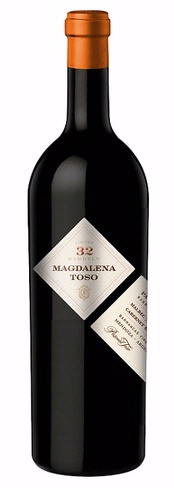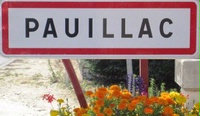|
|
 |
|
May 18, 2017
If you've ever ordered a cognac at a trendy restaurant, you've no doubt witnessed the bartender making a show of heating a snifter with hot water before filling it.
It's a dirty little secret (at least it was) that the renowned cognac house of Hennessy prefers to serve Hennessy X.O on the rocks. I learned of this firsthand a number of years ago when I had dinner with Maurice Hennessy and, to my amazement, he handed me a tall glass full of ice and Hennessy X.O as an aperitif.
He had a good laugh at my shocked face, and then explained, "Cognac and ice was the first long drink, even before scotch on the rocks."
Before I could even ask about the tradition of heating the cognac snifter before serving, he had another good laugh.
"That's not the best way to enjoy cognac," he said of the glass-heating ritual. "Do that and what you get when you put your nose in the glass is a big whiff of alcohol. The wonderful complexity, especially of an older cognac, is completely lost."
He went on to say that the ice served to tame the smell of alcohol and allowed the nuance of fine cognac to shine. Over ice, the cognac exhibited a floral note with aromas of dried fruits and spice. And the fire on the palate was subdued, reducing the burn on the finish.
In the years since I've kept my dirty little secret, sharing it only with close friends I thought might appreciate the beauty of aged cognac. But I've just learned that Hennessy recently commissioned architect Paul McClean to design a Hennessy X.O ice bucket, which was unveiled at an event last week in Beverly Hills, California.
Now that the word is out, you, too, can shock and amaze your dinner guests with that most surprising cocktail.
Posted by Robert Whitley at 12:00 AM
|
|
May 10, 2017
Early in his wine career, Felipe Stahlschmidt tended vines for one of the properties owned by the renowned Catena Zapata winery in Mendoza, Argentina. He held a degree in agronomic engineering from the National University of Cuyo in Mendoza and was well-respected for his work in the Catena vineyards — so well-respected, in fact, that when one of the winemakers quit unexpectedly, Stahlschmidt was asked to step into the winemaking job.
"I explained, 'I know the vineyards; I do not know the winemaking,'" he said over lunch recently. "I asked, 'Why do you want me for this job?' They said, 'Because your focus in the vineyards is always on the quality. That's what we want in our winemaking, too.'"
With that, Stahlschmidt went back to the university and earned a degree in enology. He also studied winemaking at the University of California, Davis, and the prestigious institute for enology and viticulture in Montpelier, France.
Stahlschmidt spent 13 years at Catena, eventually rising to chief winemaker before moving two years ago to Pascual Toso, a neighboring winery in Mendoza that recently celebrated its 125th anniversary. In addition to its long history in the region, Pascual Toso was also noteworthy because of its relationship with winemaker Paul Hobbs, a rock star-level consultant from California.
Hobbs gained fame in Argentina as the winemaker for Catena through the 1990s, and he deserves much, if not most, of the credit for establishing Catena as a global brand in the international wine market. Hobbs also has his own Mendoza winery, Cobos, as well as numerous properties in California.
Together they form a dynamic duo that positions Toso to compete with Catena, Achaval-Ferrer, Cobos or any of the other big dogs of Argentine wine. With 600 acres, Toso has the luxury of controlling every wine it makes from vineyard to bottle. The estate line, for example, is the winery's entry-level product — and well-priced at $14 for suggested retail.
As with most Argentinian wineries, malbec is the most successful wine rather than cabernet sauvignon, though the cabernet is very good. And for the big spenders, Toso produces two world-class blends that would be right at home beside the finest classified-growth Bordeaux: the 2013 Magdalena, selling for $130, a blend of 80 percent malbec and 20 percent cabernet sauvignon; and the 2014 Finca Pedregal, selling for $74, which gives a 62 percent nod to cabernet sauvignon and 38 percent to malbec.
These are two of the finest wines I have ever tasted from Argentina. They are stunning for their complexity and structure and destined for a long life if cellared under the proper conditions.
Posted by Robert Whitley at 12:00 AM
|
|
May 4, 2017
BORDEAUX, France — This is the third and final installment of my series of columns on the exceptional 2016 vintage in Bordeaux. I saved the best for last. The Medoc, the area northwest of the city of Bordeaux toward the Atlantic Ocean, is the sweet spot of vintage 2016.
Nowhere else in the vast Bordeaux region was the quality of the vintage as consistent across the board. It was particularly so in the districts of Pauillac, Margaux and Saint-Julien. The wines are suave and well-balanced, with moderate levels of alcohol and polished tannins. The best have tremendous long-term potential.
 This is a superb vintage with solid wines at every level of the Bordeaux hierarchy. Even lesser-known chateaux from appellations such as Moulis, Haut-Medoc and Listric made wines worthy of an outstanding vintage. This is a superb vintage with solid wines at every level of the Bordeaux hierarchy. Even lesser-known chateaux from appellations such as Moulis, Haut-Medoc and Listric made wines worthy of an outstanding vintage.
I have used the 100-point scale in my evaluations, but it is a sliding scale that reflects the volatility of samples being tasted so young. The following are my highest recommendations from the Medoc wines presented at the annual en primeur tastings hosted by the Union des Grands Cru de Bordeaux:
Margaux
Chateau Angludet — Good concentration; floral note; red and black fruits; fine tannins. 90-93.
Chateau Brane-Cantenac — Floral note; good concentration; suave tannins; excellent long-term potential. 91-94.
Chateau Durfort-Vivens — Pretty black fruit and floral nose; excellent concentration of fruit; good balance; fine tannins. Excellent near-term potential. 91-94.
Chateau Ferriere — Good concentration of black fruits; very fleshy; medium tannins; rich and long. Good medium-term potential. 89-92.
Chateau Kirwan — Good concentration; white pepper; red fruits; fine tannins. Good long-term potential. 90-93.
Chateau Labegorce — Good concentration; layered red and black fruits; spicy. Excellent long-term potential. 91-94.
Chateau Lascombes — Good concentration; excellent balance; suave palate; fine tannins. Excellent long-term potential. 93-96.
Chateau Marquis de Terme — Good concentration; medium weight; good length; firm tannins. Good medium-term potential. 89-92.
Chateau Prieure-Lichine — Good concentration; medium weight; good length. Good long-term potential. 89-92.
Chateau Rauzan-Gassies — Excellent concentration; spicy; layered black fruits; Firm tannins. Excellent long-term potential. 92-95.
Chateau Rauzan-Segla — Excellent concentration; layered black fruits; full-bodied; rich and long. Excellent long-term potential. 93-96.
Chateau Siran — Excellent concentration; layered red and black fruits; rich and dense; firm tannins. Excellent long -erm potential. 93-96.
Chateau du Terte — Good concentration; layered red and black fruits; fine tannins; good richness. Good long-term potential. 91-94.
Medoc/Haut-Medoc
Chateau Cantemerle — Good concentration; layered fruit; hard tannins. 89-92.
Chateau Citran — Good concentration; layered fruit; firm tannins. Excellent long-term potential. 89-92.
Chateau Coufran, Haut-Medoc — Spicy white pepper; good concentration; red and dark fruits. Excellent long-term potential. 90-93.
Chateau La Lagune — Pretty red fruits; good concentration; fine tannins. Excellent long-term potential. 91-94.
Chateau de Lamarque — Spicy white pepper; good concentration; good depth and length. Excellent long-term potential. 90-93.
Chateau La Tour Carnet — Pretty red fruits; good concentration; medium body. Excellent long-term potential. 90-93.
Chateau La Tour de By — Floral note; good concentration; layers of fruit; firm tannins. Excellent medium-term potential. 89-92.
Moulis-en-Medoc
Chateau Maucaillou — Pretty floral note; bright red fruits; power in the glass; good concentration; firm tannins. Good long-term potential. 90-93.
Chateau Poujeaux — Good concentration of black fruits; firm grape tannins. Excellent long-term potential. 91-94.
Pauillac
Chateau d'Armailhac — Excellent concentration; balanced; red and black fruits; good length; fine tannins. Excellent long-term potential. 93-96.
Chateau Batailley — Good concentration; layered fruits; fleshy, soft tannins. Good near-term potential. 90-93.
Chateau Clerc Milon — Good concentration; layered fruits; fleshy, fine tannins; good length. Excellent near-term potential. 90-93.
Chateau Croizet-Bages — Good concentration; fleshy black fruits; fine tannins. Good medium-term potential. 90-93.
Chateau Lynch-Bages — Excellent concentration; layered black fruits; well-balanced; outstanding length; fine tannins. Excellent long-term potential. 94-97.
Chateau Pichon Longueville Comtesse de Lalande - Good concentration; layered black fruits; fleshy and firm; fine tannins. Excellent long-term potential. 94-97.
Saint-Estephe
Chateau Cos Labory — Excellent concentration; well-balanced, firm tannins; black fruits. Excellent long-term potential. 92-95.
Chateau Lafon-Rochet — Good concentration; slightly tart red fruit; medium weight; good length; firm tannins. Good medium-term potential. 89-92.
Chateau Ormes de Pez — Good concentration; pretty floral note; medium weight; good length. Good medium- to long-term potential. 90-93.
Chateau Phelan Segur — Good concentration, medium weight, black fruits, firm grape tannins. Good medium to long term potential. 90-93.
Saint-Julien
Chateau Beycheville — Excellent concentration; layered black fruits; good richness and flesh; good length; fine tannins. Excellent long-term potential. 94-97.
Chateau Branaire-Ducru — Excellent concentration of black fruits; layered; fleshy; outstanding length; fine tannins. Excellent long term potential. 94-97.
Chateau Gloria — Nice floral note; excellent concentration; soft tannins. Good medium- to long-term potential. 90-93.
Chateau Gruaud Larose — Good concentration; flowery; layers of red and black fruit; fine tannins. Excellent long-term potential. 91-94.
Chateau Lagrange — Good concentration; good richness; layered black and red fruits; soft tannins. Excellent medium range potential. 90-93.
Chateau Langoa-Barton — Excellent concentration; well balanced; medium body; good length; soft tannins. Excellent medium-term potential. 91-94.
Chateau Leoville Barton — Excellent concentration; exquisite balance; layered fruits; good length; suave tannins. Excellent long-term potential. 94-97.
Chateau Saint-Pierre — Pretty floral note; good concentration of fruit; layered and rich but firm. Excellent medium- to long-term potential. 93-96.
Chateau Talbot — Good concentration; fleshy but firm; good length. Good medium-term potential. 90-93.
Follow Robert on Twitter at @wineguru
Posted by Michael Apstein at 12:00 AM
|
|
 |
|